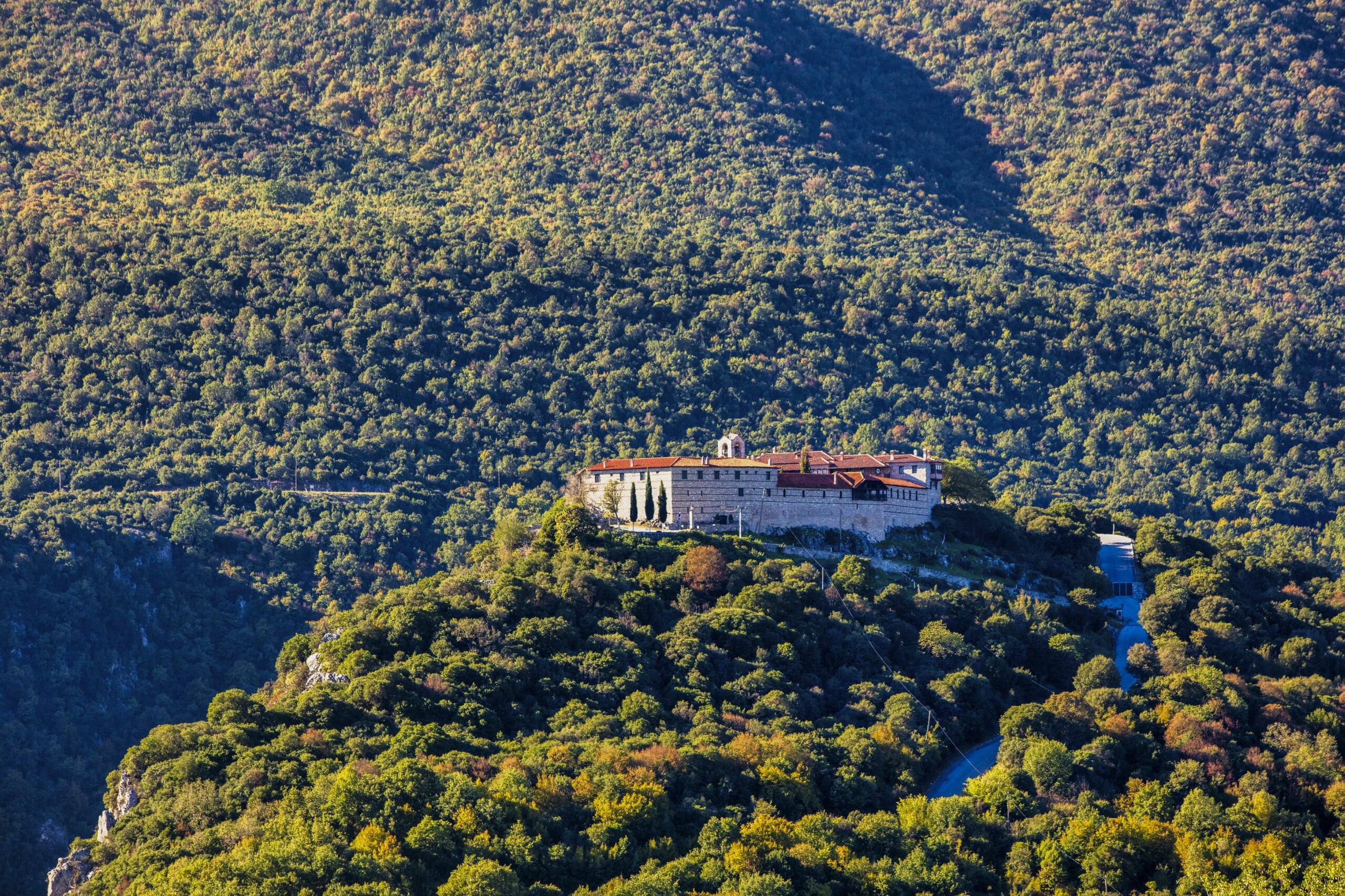Church of Panagia Koumpelidiki in Kastoria

The Church of Panagia Koumpelidiki, also known as Panagia Kastriotissa, is one of the most important Byzantine monuments in Kastoria and serves as the city's official emblem. It is located within the Byzantine acropolis and was built around 1020 at the highest point of the fortress. The name "Koumpelidiki" derives from the Turkish word "koumpes," meaning "dome," referring to the church’s impressive dome, which is exceptionally tall compared to the building’s proportions. The church follows a triconch design, with a narthex on the west side and an exonarthex added in the 15th century.
The church's interior features a rich fresco decoration, with the oldest frescoes dating to the mid-13th century and belonging to the Palaiologan Renaissance style. Among the notable depictions are scenes from the life of the Virgin Mary, including the Dormition, as well as a rare representation of the Holy Trinity in the inner narthex, where Christ is depicted as Pantocrator with the Holy Spirit in the form of a dove. The exonarthex was adorned with frescoes in the 15th and 17th centuries, featuring scenes such as the Dance of Salome and the Beheading of Ioannis the Baptist.
The church suffered significant damage during the Greco-Italian War when its dome was bombed, but it was restored in 1949. Extensive conservation and restoration work on the frescoes followed, particularly between 2000 and 2009. With its distinctive architecture and rich iconographic decoration, Panagia Koumpelidiki remains one of the most significant religious and artistic monuments of the Byzantine period in Greece.